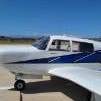How long from start up to take off? (Normally aspirated)
-
Members Online
- Larry
- tim417
- ericrynehess
- mluvara
- PT20J
- MB65E
- Scottknoll
- George Chaney
- Flyler
- MikeOH
- Deb
- M20R
- Fritz1
- Ron McBride
- rpcc
- Vance Harral
- Nippernaper
- Aerodon
- Alan Maurer
- deki_mg
- Matthew P
- Mooney in Oz
- Tom F
- IvanP
- kaba
- jamesyql
- Slick Nick
- DXB
- Red Leader
- Aaviationist
- Mufflerbearing
- Sdavis
- Fly Boomer
- AndreiC
- mike_elliott
- RGDantas
- MarquezJC


Recommended Posts